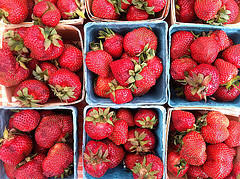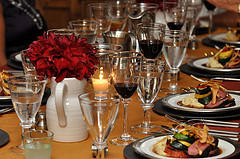Home canning is a delicious food trend that’s seen quite a comeback in recent years, and it makes a great way to use up fresh produce before it has a chance to spoil. Here are a few safety tips that will help you to can your fruits and veggies safely.
- Be aware of the safety hazards. Many first-time home canners don’t realize that there are deadly food poisonings associated with incorrect canning methods. Botulism is the most common one, and it comes from a bacteria found in soil that produces a toxin when sealed in a jar. Luckily, there are preventative measures to kill these bacteria before canning.
- Throw out your old canning recipes. Those old family canning techniques are likely a botulism risk waiting to happen. Keep up with the latest techniques to keep yourself and your family safe.
- Don’t stray from the recipe. Canning recipes aren’t just created to preserve the taste of your foods; they’re also meant to protect you against illness. Resist the urge to add extra herbs or a pinch more sugar, as this can threaten the pH levels in your jar.
- Use a pressure canner. In recent years, it’s become apparent that the only way to stay completely safe while canning meats or low-acid vegetables is by using a pressure canner. This heats the food to 240 degrees Fahrenheit, a temperature that can only be reached in a pressure canner.
Don’t Botch It: Home Canning Safety Tips [Home Food Safety]
Home Canning: Keep Your Family Safe! [FoodSafety.gov]
Home Canning and Botulism [CDC]
Safety Tips for Home Canning [About.com]


 Equal Housing Opportunity
Equal Housing Opportunity